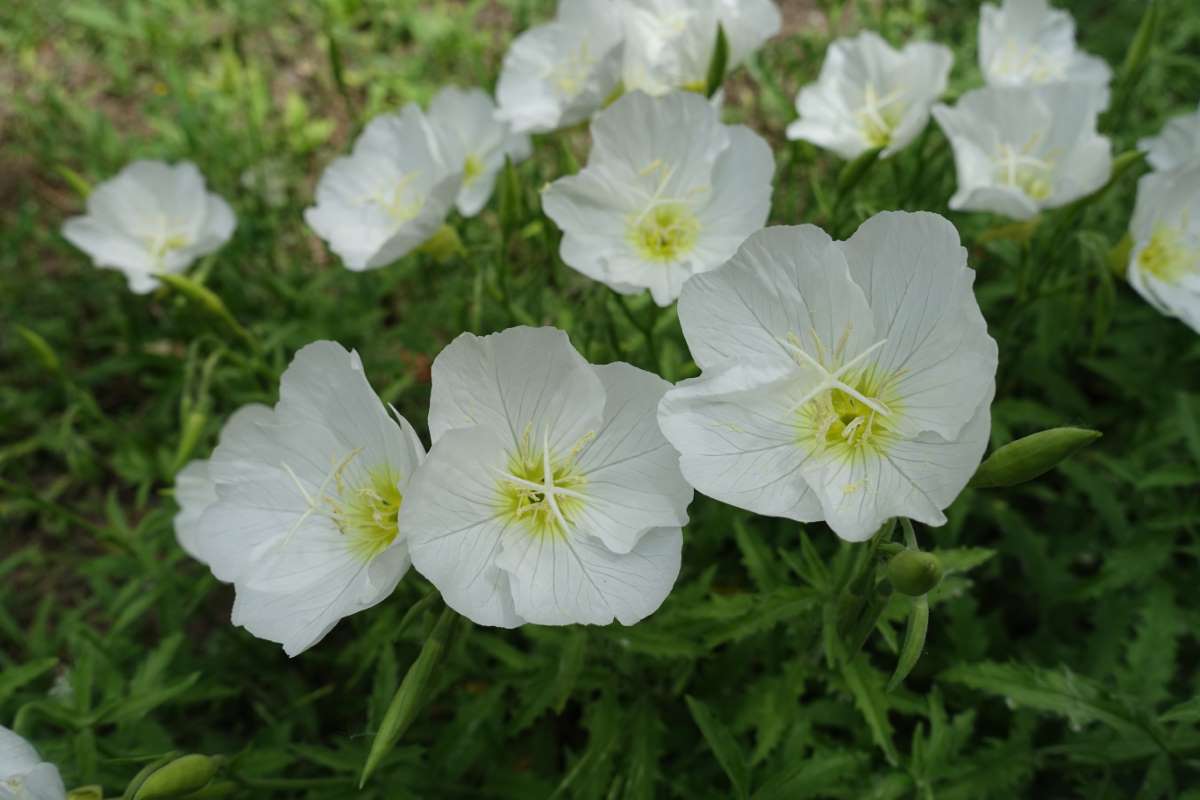Description
Oenothera – Evening Primrose – Sundrops –
There are about 125 species of annuals, biennials, and perennial, some with taproots or fibrous roots and a few with rhizomes or runners in this genus. They are mostly from North America, but widely naturalized elsewhere, in well drained, sunny sites, such as mountain slopes, although some are from deserts. They have upright or decumbent stems with alternate, more or less lance shaped, simple or pinnatifid, smooth edged or toothed, and occasionally basal rosettes of slightly larger leaves. Evening primrose are grown for their short lived flowers, which are produced over long periods in summer, they are often fragrant, yellow, or less commonly red, pink or white and are large saucer to cup shaped, sometimes trumpet shaped. Each flower has a long tube and 4 petals, and is either solitary and axillary, or borne in terminal racemes. Individual flowers open at dawn or dusk, and fade quickly. Taller species are suitable for a sunny, mixed or herbaceous border, low growing ones are better for border edging.
Grow in poor to moderately fertile, well drained, even stony soil, in full sun. Protect from excessive winter moisture. Divide in early spring or fall.
Prone to leaf gall, downy mildew, rust, powdery mildew, Septoria leaf spot, and root rot may occur in wet soils.
O. pallida – This spreading, rhizomatous, hairless, freely branching perennial from western North America grows 8-20″ tall and 8-12″ wide. It produces lance shaped, wavy edged mid green leaves, 1-2 ½” long. From early summer to autumn it bears saucer shaped, fragrant white flowers, 3/4-4″ across, aging to pink opening at dusk.
Zones 3-7





